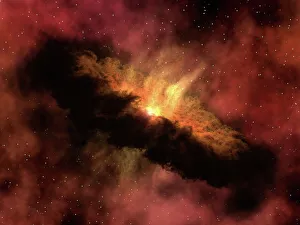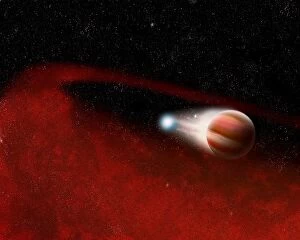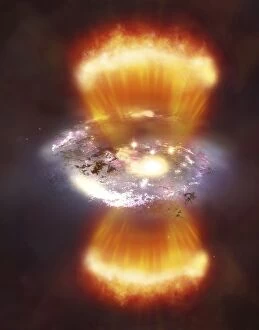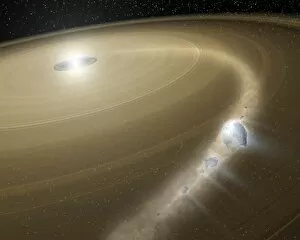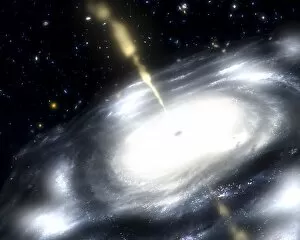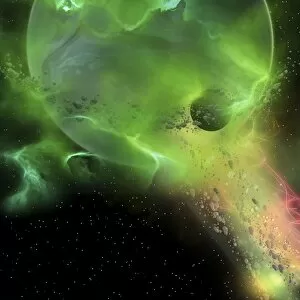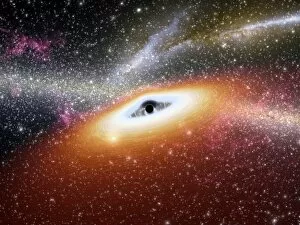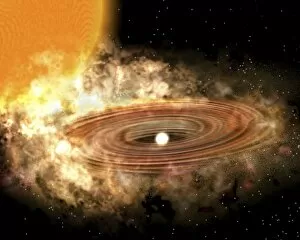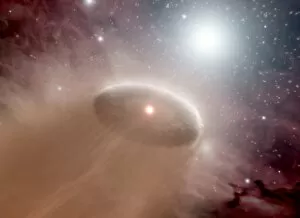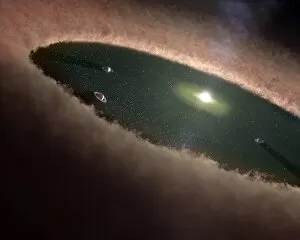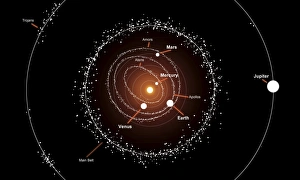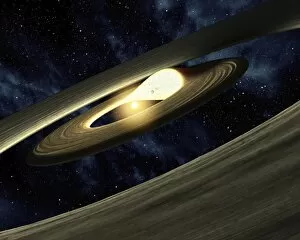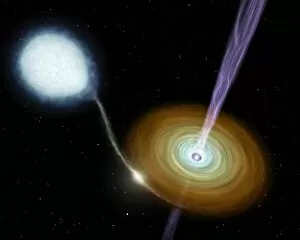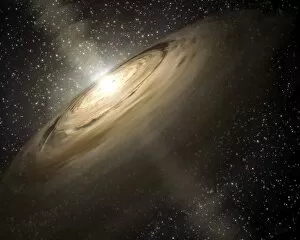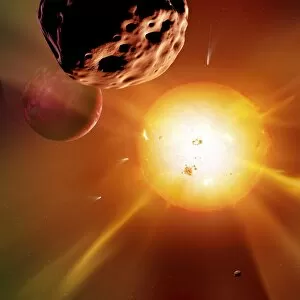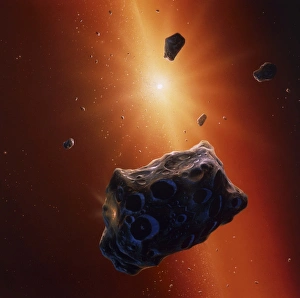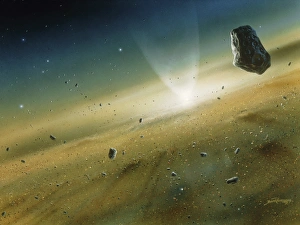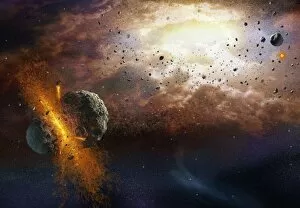Planetesimal Collection
"Planetesimal: The Building Blocks of Cosmic Beauty" A young star surrounded by a dusty protoplanetary disk, where planetesimals take shape
All Professionally Made to Order for Quick Shipping
"Planetesimal: The Building Blocks of Cosmic Beauty" A young star surrounded by a dusty protoplanetary disk, where planetesimals take shape, laying the foundation for future worlds. Witness an extraordinary sight as a debris disk encircles an unusual class of interacting binary stars, unveiling the chaotic dance of celestial bodies. Step into a captivating scene portraying the early stages of a solar system forming, where planetesimals gather to create new planets and bring life to barren landscapes. Immerse yourself in an artist's concept of a galaxy nestled inside a glowing hydrogen blob, showcasing the breathtaking interplay between cosmic structures and elemental forces. Marvel at the sheer power as a comet is torn to shreds around a dead star, leaving behind remnants that will become part of other planetary systems yet to be born. Discover the enigmatic beauty within a rare galaxy veiled in extreme dustiness while producing mesmerizing radio jets that traverse vast cosmic distances. Observe with wonder as spheroid shapes emerge from the formation process of new planets, sculpted by gravitational forces and primordial materials coming together harmoniously. Behold the celestial harmony within a binary star system, where two stellar companions share their journey through space while shaping their surroundings with swirling disks of dust. Delve into an awe-inspiring illustration depicting a supermassive black hole reigning supreme at the core of its young and star-rich galaxy—a testament to nature's grandeur on colossal scales. Peer into distant realms as we unveil glimpses of possible newfound planets spinning gracefully through clearings amidst nearby stars' dusty embrace—potential cradles for extraterrestrial lifeforms yet unknown. Explore mysteries beyond imagination as you encounter supermassive black holes lurking at galactic centers—an embodiment of immense gravity shaping entire galaxies around them.

